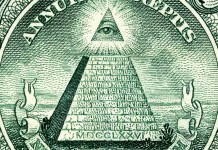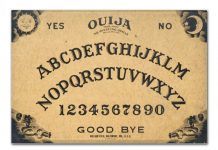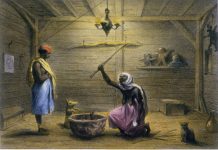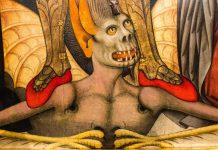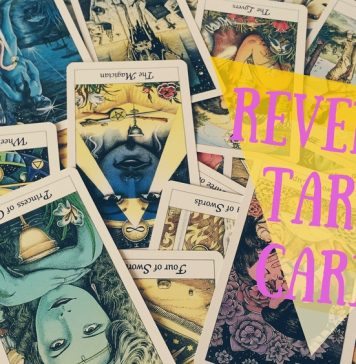The Wheel of the Year is the calendar used by pagans and contains all the days they consider to be holy and special. It is based on eight festivals each corresponding to a particular time of the year. Four of these are solar, or sun, based festivals and four are lunar, or moon, based festivals. These provide a crucial balance between the masculine and the feminine that is important in pagan rituals. These festivals, also known as sabbats, happen at equal points throughout the year.
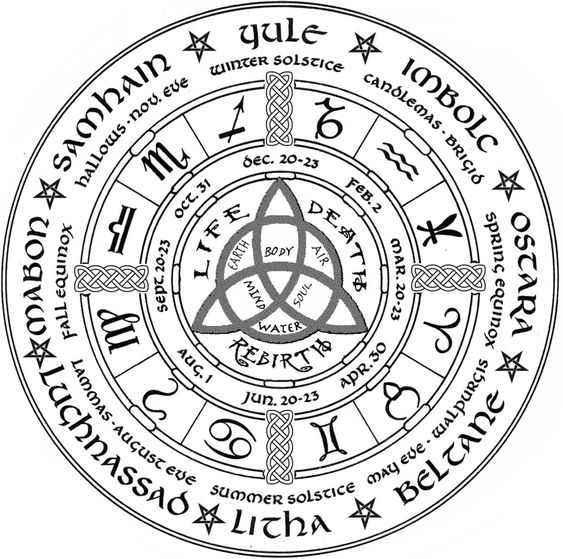
Wheel of the Year Festivals
Samhain is the first of these festivals. It is celebrated on the 31st of October as the earth dies and becomes dormant, waiting for the breath of spring to bring new life. It is considered by pagans to be a time to connect with those who have gone before, to celebrate the ancestors and all the blessings their lives have provided for us. The veil between worlds is considered very thin during this time of year and so it is a time when those with psychic abilities may find it easier to connect with those who have gone on.
The Wheel of the Year Soltices
The Winter Solstice, also celebrated as Yule, comes in the winter. It is the turning point of the earth, the moment when we shift from the long, tired days of winter and darkness into longer, brighter days of sunshine. This is a time of celebration, meant to be spent at hearth and home with loved ones. It is a time of new beginnings. Spring is beginning to make its way back.
Imbolc comes in February as a reminder that though the winter is long, spring is nearly here. Days are becoming longer, the weather is beginning to warm. You may feel a sense of anticipation as you move through your day, as though something is coming. This is a time when those who prefer to grow their own plants will begin their seeds.
The Spring Equinox comes with Ostara or Easter. It is the true birth of spring. The sap of the trees is beginning to run and you can feel the earth beginning to fully waken around you. This is the time to celebrate the re-awakening of the earth and all that means for the life around you.
Beltane comes at the end of April. “April showers bring May flowers” is particularly apt here and this is a celebration focused almost entirely on fertility both of the earth, of the animals and of mankind. This is the season where the earth bursts forth with all her fruits.
The Summer Solstice, also known as Litha, is the moment where things begin to wind back down again. Everything on the earth is a part of this great cycle that moves between the two solstices. As the Yule brought back the longer days, Litha begins to shorten them once again. We can continue to enjoy our warm weather, our healthy crops, and to prepare for the fall and harvest.
Lammas is the end of summer, the beginning of the harvest. It is our chance to look at what great bounties mother earth has brought us and to thank her for them as we begin to harvest and prepare for the winter months we know are coming.
The Autumn Equinox
Lastly is the Autumn Equinox or Mabon. It is the time to celebrate the end of the season, the coming of winter and to give thanks for all we have received. Days and nights are about equal through this season, but the chill that comes in the evening reminds us that Samhain is on its way.
Wheel of the Year – Pagan Holidays
The wheel of the year, also known as the pagan wheel of the year or the Wiccan wheel of the year, is the calendar of holidays that is celebrated throughout the year by those who practice Wicca and other forms of what is known as Neo-paganism. The wheel of the year shows where the eight Sabbats or holidays occur – each is tied to a season or change in the world that brings our attention back to the never-ending cycle of life. These sabbats are connected to the two solstices, the two equinox, and their midpoints. The celebrations and holiday themes have been celebrated for centuries but the Wheel of the Year that we use presently is nowhere near as ancient as the Celtic traditions it celebrates. Our modern wheel of the year was first suggested in 1835 by Jacob Grimm and finalized and fixed in the 1950’s and 60’s by the modern Wiccan movement.
The eight sabbats are:
- Samhain
- Yule
- Imbolc
- Ostara
- Beltane
- Litha
- Lughnasadh
- Mabon
Each of these Sabbats corresponds to a part of the cycle of life and is there to stand as a reminder to be grateful for all we are given, even when it is taken away; to be thankful for the circle that every year brings us new birth, raises the crops that we cut down to feed ourselves, sees it all die away to replenish the earth as it waits for the cycle to be reborn again.
Yule takes place during the Winter Solstice and is known as the turning point of the cycle. When Yule is celebrated it’s no longer about the death of winter but the anticipation of the birth of spring. From this point on the days start to become longer, the ground slowly begins to warm, and we creep into Candlemas with ancient longing our eyes scouring the ground for those first clear signs of spring.
Candlemas, also known as Imbolc, falls on the first day of the month of February and officially marks the beginning of spring cleaning. Around this time the first blossoms and sprouts may be seen, flowers that thrive on the still chilly nights will start to bloom and we feel the urge to take advantage of any moments of sunshine to prepare for the rush of springtime’s activity.
On the Spring Equinox is the celebration Ostara. Here the days are the same length as the nights, once the morning comes the earth will have broken free of the grip of winter and days will be longer than nights.
May Eve, also known as Beltane, is seen by many as the first day or summer. In many cultures now it is celebrated as May Day and is a celebration of the fullness of life and a world that is young and flourishing.
Litha is celebrated during the Summer Solstice, Midsummer, the turning point and height of summer. The day here is the longest in the whole year. From here the decline of the year begins; the days become shorter and the earth hurtles towards the golden days of harvest.
Lammas or Lughnasadh is the first of three harvest festivals. This one involves the baking of bread with the figure of the god in it. The bread is eaten to symbolize the sanctity and importance of the harvest; it is a celebration of the first fruits of the harvest.
Mabon is celebrated on the Autumnal Equinox and is the second of the harvest festivals. It is a festival of thanksgiving and the recognition that we should share the bounties we receive.
Lastly is Samhain and it is considered by many to be one of the most important of the Sabbats. It is during Samhain that we remember our loved ones who have gone before. As with many other religions it is believed to be a time where the veil between worlds is at its thinnest.

